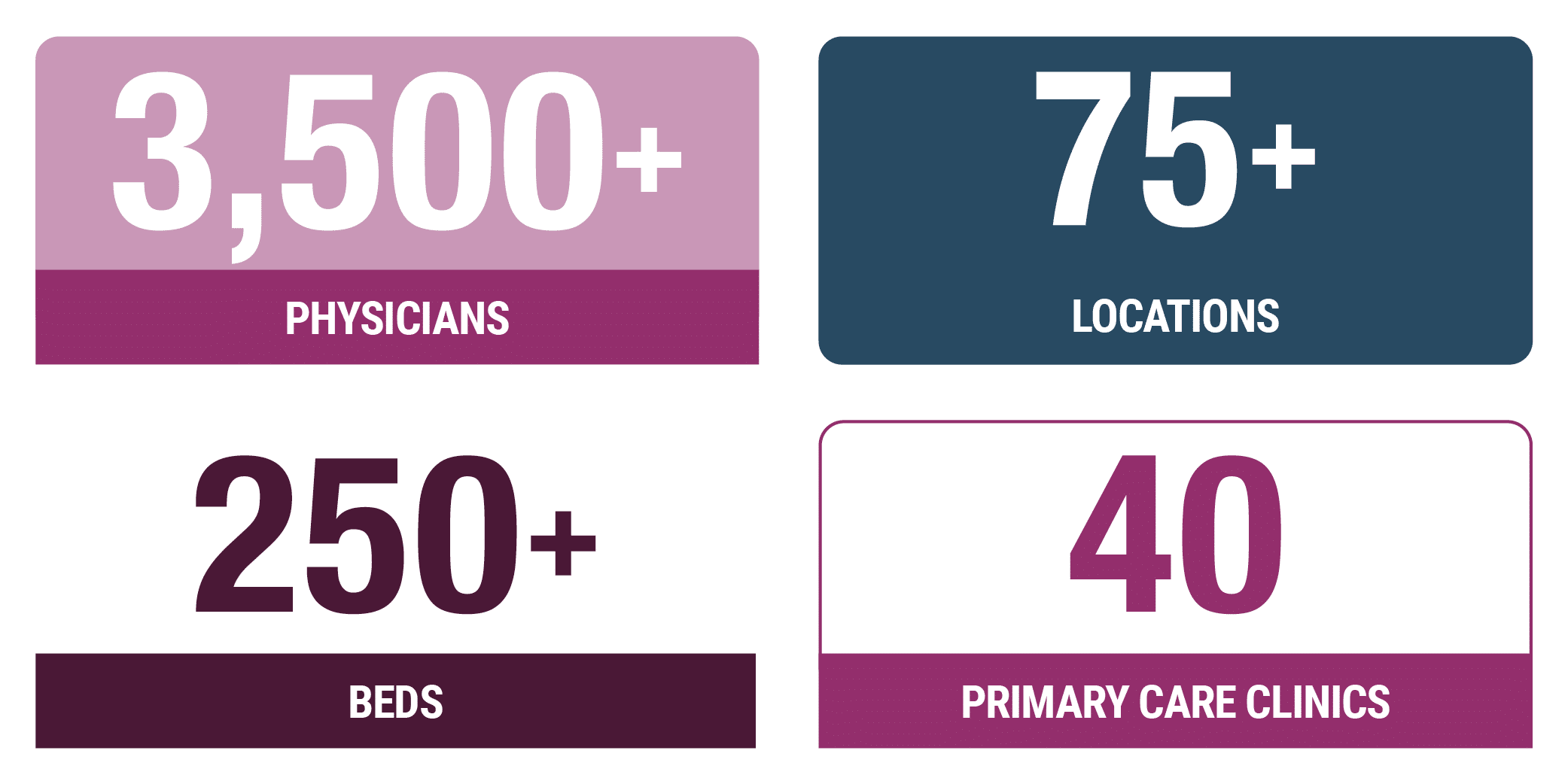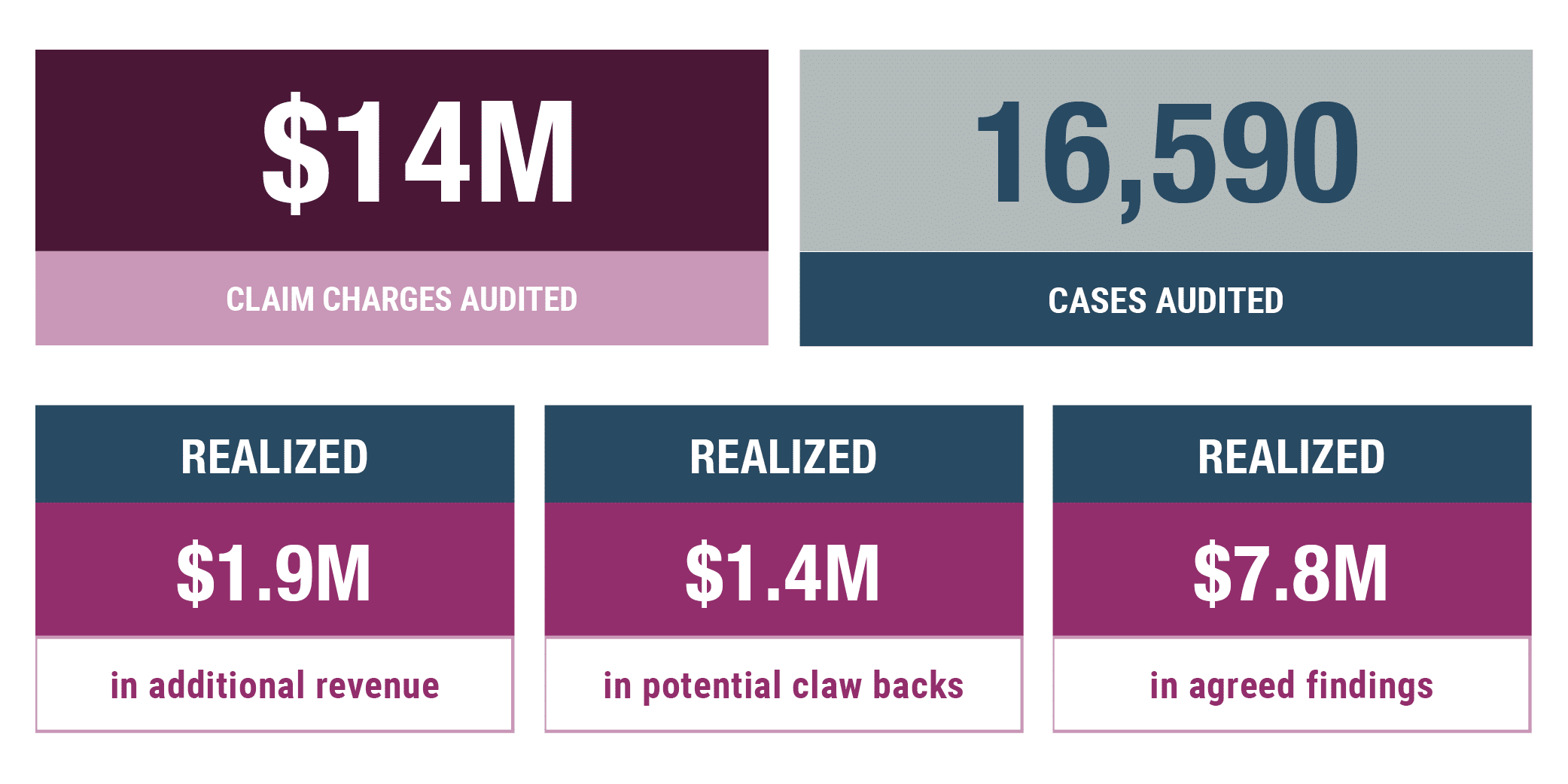THE CUSTOMER PROFILE
This multispecialty group practice includes more than 3,500 physicians in the Midwest. Closely associated with a university medical school, the practice delivers healthcare services in 40 primary care clinics, 5 specialty care clinics, and several affiliate hospitals.
The practice encompasses more than 250 specialties and services, including a full range of internal medicine, pediatric medicine, geriatric medicine, emergency services, hospice, neurology and neuroscience, orthopedics, urology, and sleep medicine.

THE CHALLENGE
Massive audit volume clashes with paper-based systems.
Paper-based audits were becoming less and less feasible for the compliance department of this large practice. With a goal of auditing 3,500 providers annually and a week of prep time needed for each audit (plus the actual audit), the numbers just didn’t add up. The associate director for audit compliance education was looking at having to add six to 10 auditors to her team just to support the volume.
There was a lot riding on the audits. “We are the encyclopedia for the organization. We get questions all the time from everyone,” says the associate director. Unfortunately, because the auditing and reporting process was so time-consuming, there was less time for provider education.
Worse still, gathering data on the impact of audits for department finance managers and executive committees was almost impossible. “It was all manual, and there was no way for us to be able to share the impact—or even know what the impact was because we could never get through all the audits in a year,” she says.
The associate director also knew that although scheduled audits were useful, it would be much more efficient to drill down into denials data and perform risk-based audits. “There were just too many things we weren’t able to see clearly with the systems we had,” she explains.
There was no way for us to be able to share the impact – or even know what the impact was because we could never get through all the audits in a year
Because [our department] is more efficient, we’re able to get to more providers. That means more educated providers, which means fewer problematic audits as we go forward. I think everyone benefits.
THE SOLUTION
MDaudit reduces audit preparation time from one week to one hour.
In 2016, the associate director championed the purchase and implementation of MDaudit Pro, which reduced the time to prepare an audit from a week to about an hour and helped the team effortlessly track which audits were due. In 2021, the team shifted to MDaudit Enterprise and began using the Revenue Optimizer module to focus audits on solving the most serious denial-related issues.
Today, every auditor can audit two providers per day, and each audit is based on 10 charts. Although some are still scheduled yearly audits, there are also about 50 risk-based audits conducted each year. “From an efficiency perspective, MDaudit is invaluable,” says the associate director. “I anticipate that with these types of analyses, we’ll be able to reduce the number of audits so we’re working smarter, not harder.”
Her sentiment is echoed by a senior auditor in the department. “Because we’re more efficient, we’re able to get to more providers. That means more educated providers, which means fewer problematic audits as we go forward. I think everyone benefits,” she says.
The senior auditor says she appreciates being able to quickly pull a template and fill it with materials for an audit. “The scheduling process is also simple,” she says. “One of us creates the audits for that month (usually around 100), and they get assigned to an auditor. Then they sit in the queue in preparation until they reach the top of the list.” If an issue is brought to the department’s attention (e.g., a whistleblower), the team can easily accommodate the need for a swift audit.
The team’s focus for the next six months is to better understand the data required by both the department finance managers and executive committees. The associate director notes that MDaudit has already provided the necessary training, and she and others in the department are looking forward to spending time pulling data and creating new types of reports.
For example, a year-over-year comparison on a particular provider can begin to answer some important questions. “We’re now able to quickly see how their recent billing compares to their billing in the past,” explains the associate director. “Once we see what has changed, we know what areas to look at more carefully and which questions to ask during the audit.”
In addition to providing much-needed information to auditors and a plethora of stakeholders, the data will provide a way to narrow the focus for the compliance department even further.
“Rather than looking at an individual provider, we can determine what the problem is and fix the problem across the board,” says the associate director. “That not only helps with financials, it ensures our compliance is at a level where our providers aren’t worried about billing-related malpractice and we’re in no danger of ending up on a federal list of practices not complying with the rules.”
THE RESULTS

To download the full case study PDF, click here.







